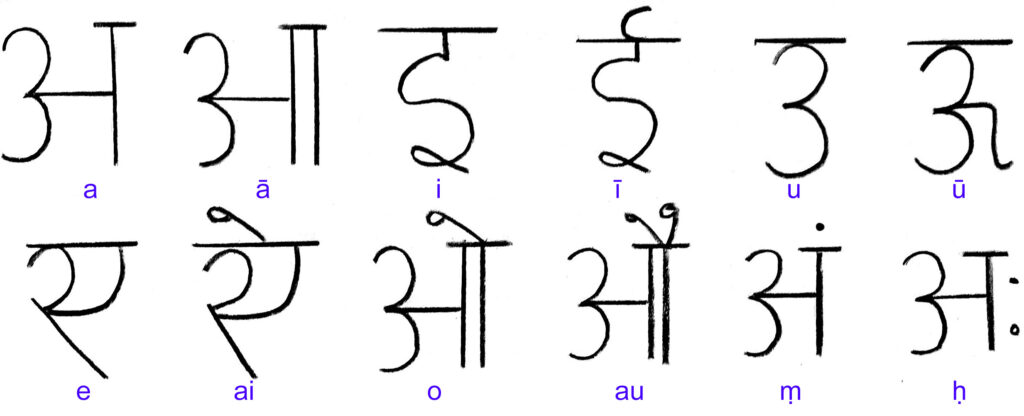INTRODUCTION
In every language, differences exist between the handwritten version and the printed version of the script. We were writing long before the printing press was created by Gutenberg, and most definitely ages before digitization. For example, the printed version of the alphabet “a” looks very different to its digital counterpart. Given that everything is digital these days anyway, this might make learning the handwritten script a moot task. However, it is important to sometimes write in Nepali, and read others’ handwriting as well. Thus, we will be looking at a sample handwritten script of Devanagari.
In the printed version of the English Language’s script, you can find many variations and differences (depending on your source). For example, there are fonts that lack serifs, which are the pointy ends of characters; there are also fonts that have these serifs. Yet, you will almost never see serifs in handwriting, simply because it is cumbersome to write. Some people also write in cursive, which some people may find hard to read. As a tale goes, an expat in Japan used to write their private documents in cursive because many Japanese people were not familiar with this style.
Take a look at the lower-case of the alphabet ‘a’. In print, you will usually find a short hook above it, while the handwritten version lacks it. If you were unfamiliar with one of the other forms, would you be able to read it?
In Nepali, there are some alphabets which look vastly different from their digital counterparts. In order to familiarize you, I have attached my handwriting below so that you can study it. Mind you, my handwriting isn’t really a prize-winner, but it should get the point across. 🙂
VOWELS CHART
CONSONANTS CHART
EXERCISE
You can find a PDF below containing a worksheet you can print to practice the Devanagari script.

